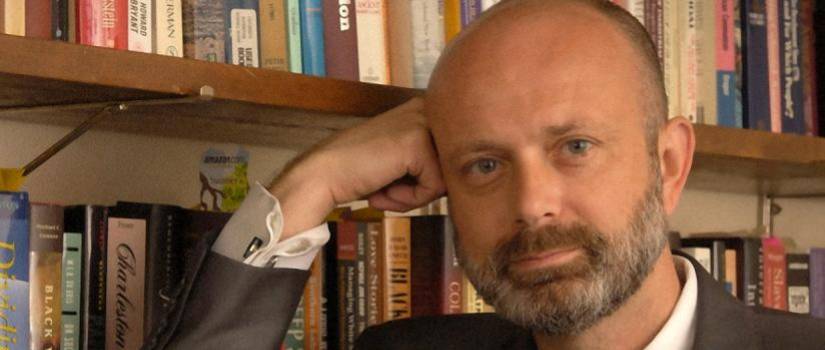Mark Smith finds bells fascinating – especially the bells used during Southern slave-holding days.
Bells defined community. Outside the sound of the bell lay wilderness and danger.
They called people to church, and slaves from the field. The time-keeping function of bells was crucial in the day-to-day running of a Southern plantation – as were the sounds of chains and spirituals and, of course, the whip.
And eventually, bells made molten became the cannons of war.
Sounds, Smith says, “can be a seduction into a past that’s not ‘re-creatable’ ” by merely re-enacting it. All of sensory history – the examination of sound, feel, odor, taste, color – “is a wonderful thing because it helps texture the past” and forces historians to write and present their findings in a more engaging way, to show how people acted toward one another.
Smith, author of The Smell of Battle, the Taste of Siege: A Sensory History of the Civil War, is a researcher and teacher who uses all of his senses to explain the world and its events to his students. He isn’t sure he’s a better historian because he focuses on all five senses, but he knows he’s a busier one. The Smell of Battle alone took him more than 10 years to research and to write.
Beware, Smith cautions, the mountebank: the re-enactor who claims he can recreate history in our “highly deodorized age,” the one who claims he can easily unveil sensory history. How could anyone recreate the “rank and fetid” stench following the Battle of Gettysburg, for example? Or the absolute silence of a slave trying to escape?
To full engage one’s senses in the understanding of history, even the figurative removal of the velvet rope isn’t enough, Smith says. Just touching something a few times won’t take you back through the decades.
So how does one teach history by using the senses?
“Part of the trick, for me, is to integrate the sensory into lectures,” Smith says – “to show how the senses help us better understand some of the … largest questions in U.S. history” – questions till now described mostly by bystanders and participants focusing on what they had seen.
“It’s not to devalue sight. It’s trying to restore the other senses in context” – by reading historical texts “with an eye to the ear.”
He introduces primary texts, say photographed pages of a slave-master’s journal or
manifests. How many mirrors did the man own? How many guns? What portion of his spending
was committed to the keeping of slaves? What do the answers to these questions say
about the relationships among the people on a plantation – primarily, master and slave?
Why are you at USC?
“I came (to USC) because I specialized in Southern history … and slavery,” Smith says, so what better place to immerse himself in the period that fascinates him? South Carolina boasts a bounty of handwritten documents that give life to the slave-holding period, among them slaveholders’ journals and manifests. And it’s rich in people who prize their personal histories.
“People know a lot about their Southern history background,” Smith says, “and it’s always interesting to talk to them, so it just made sense to be here and not anywhere else.”
Why do you teach?
Smith enjoys teaching the introductory U.S. history class to show students how fascinating history can be. Often, they “pop up again” in non-required classes. That’s when he knows he has snared them.
He favors the Civil War – it’s not only his field, he says, but his habit -- because he “doesn’t have a dog in this fight.” He’s British, so students are inclined to believe he won’t color the history either butternut or blue, and better respect what they learn.
Smith especially loves exposing his students to the documents available in archives on campus and off, what Smith calls “history in the raw.”
As a historian, Smith looks forward as well as backward – to the history being made now. History not only will remain relevant, it will become more accessible on the Internet. These days, Smith says, “there are very few (historical) sources that don’t contain some sensory evidence.”
